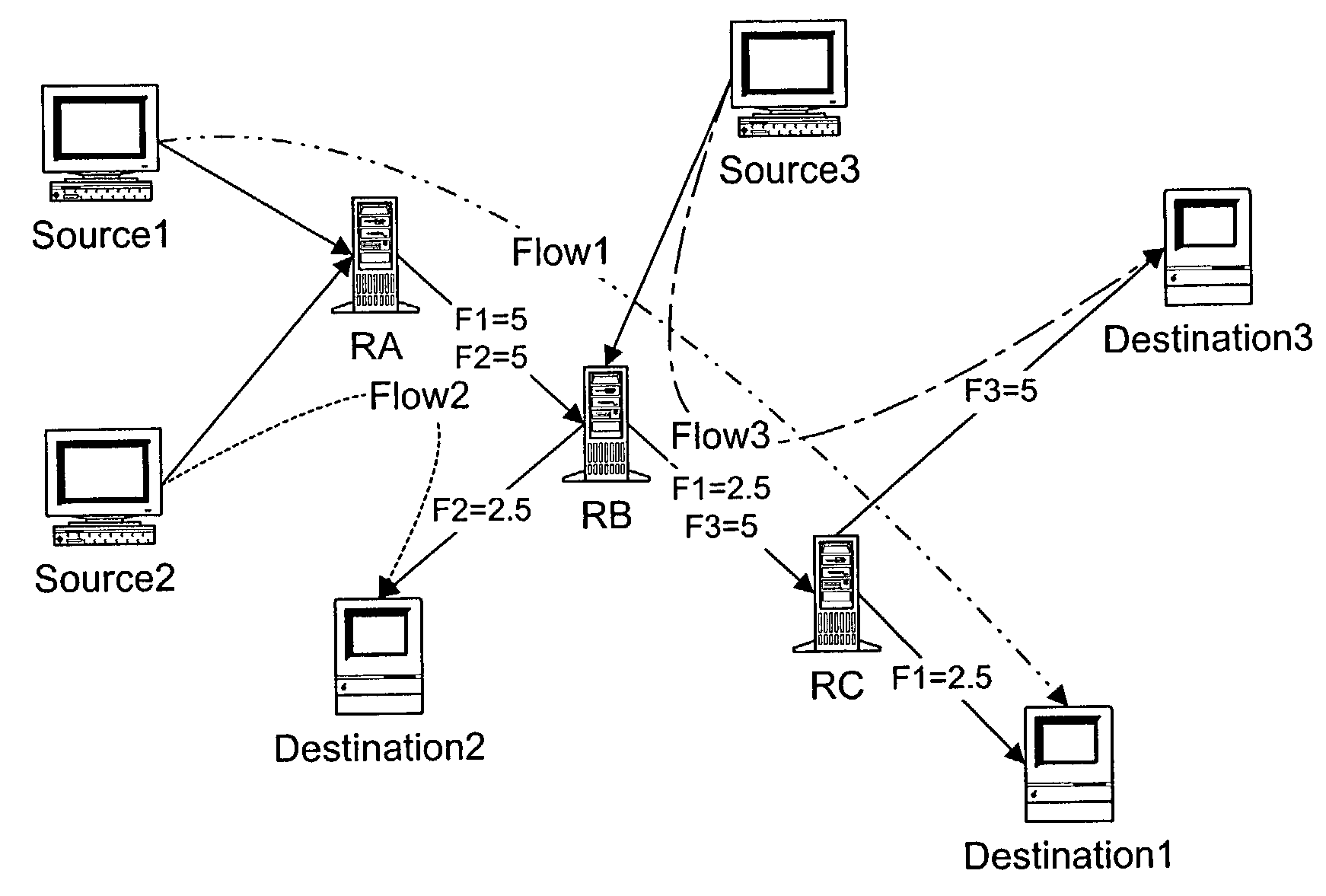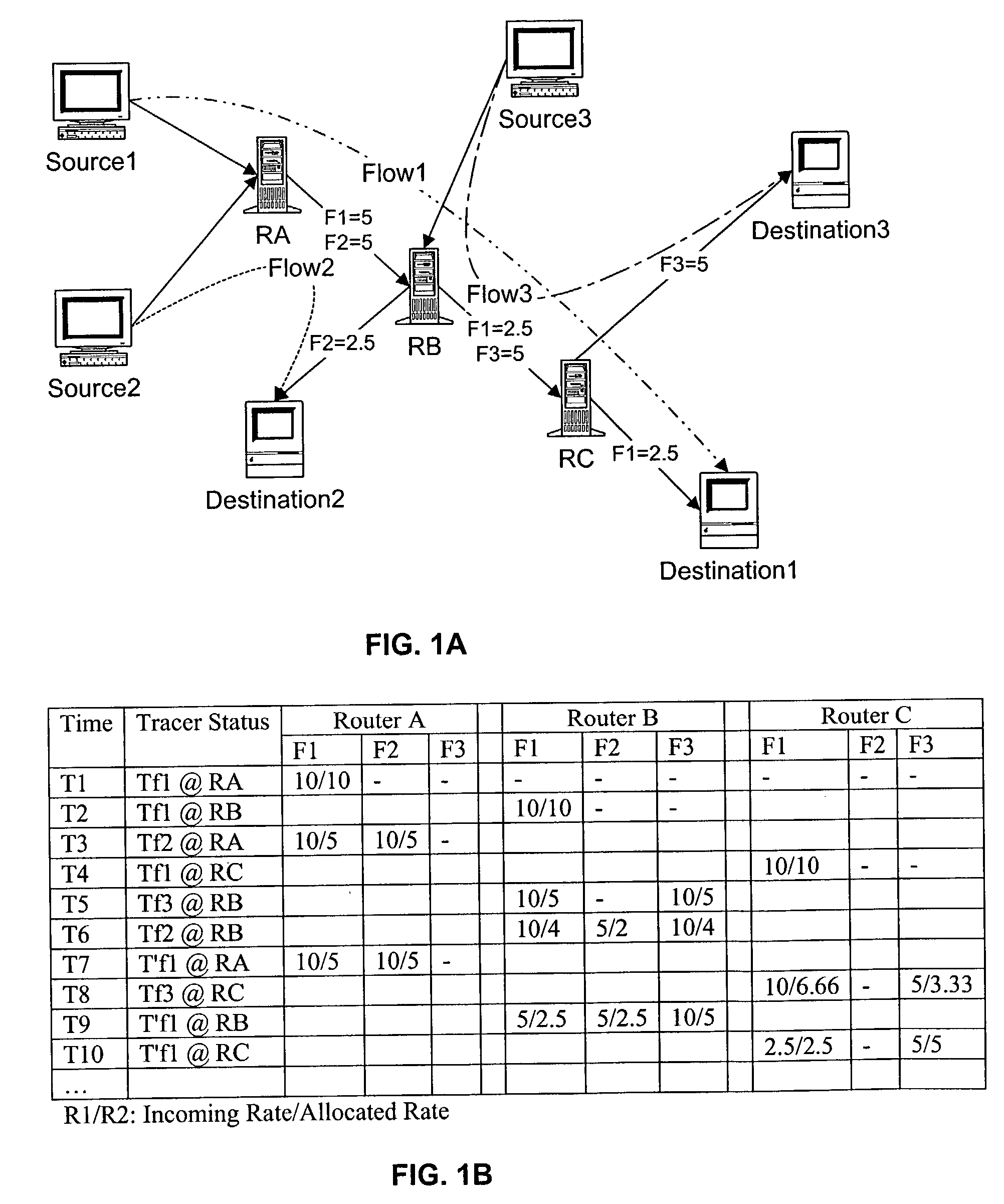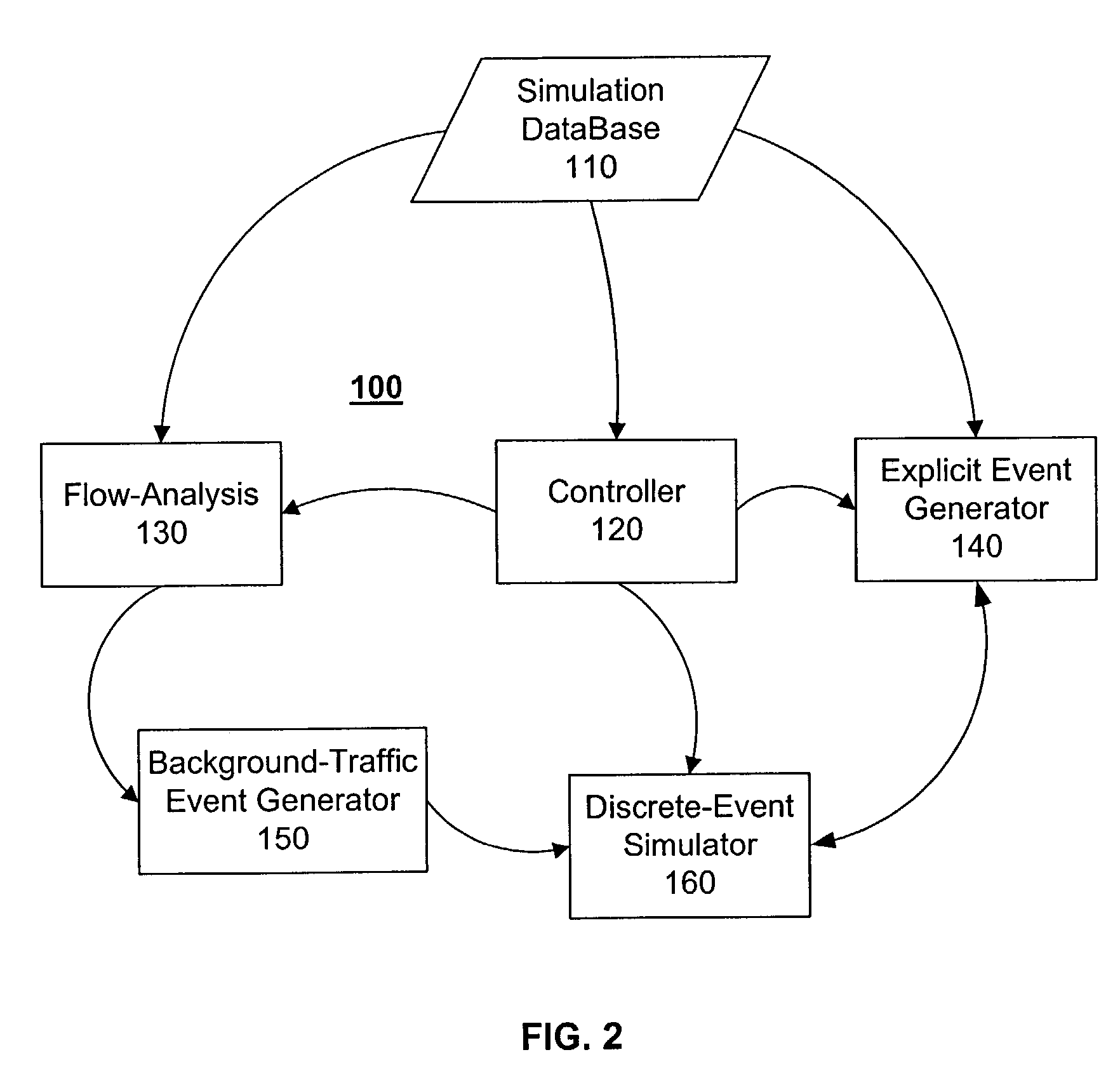Flow propagation analysis using iterative signaling
a flow propagation analysis and iterative signaling technology, applied in the field of simulation, can solve the problems of inability to perform discrete-event simulations, inability to accurately perform steady-state propagation flow analysis, and inability to achieve analytic modeling, etc., to achieve accurate steady-state flow analysis, reduce the number of iterations required, and achieve the effect of reducing the number of iterations
- Summary
- Abstract
- Description
- Claims
- Application Information
AI Technical Summary
Benefits of technology
Problems solved by technology
Method used
Image
Examples
Embodiment Construction
[0019]This invention is particularly well suited for use as a stand-alone flow-propagation analysis tool, or for performing flow-propagation analysis in a discrete-event simulator, or for a variety of uses in a hybrid simulator, discussed below. For ease of understanding, the invention is initially presented in the context of a stand-alone propagation analysis tool. Also for ease of understanding, the invention is initially presented in the context of an analysis of average throughput, although the invention is not limited to a determination of averages, as will be detailed further below.
[0020]FIG. 1A illustrates an example model of a network, illustrating three traffic flows through a network of three routers, RA, RB, and RC. Flow1 corresponds to traffic between a source device, Source1, and a destination device, Destination1. Flow2 corresponds to traffic between Source2 and Destination2, and Flow3 corresponds to traffic between Source3 and Destination3. In this example, it is assu...
PUM
 Login to View More
Login to View More Abstract
Description
Claims
Application Information
 Login to View More
Login to View More - R&D
- Intellectual Property
- Life Sciences
- Materials
- Tech Scout
- Unparalleled Data Quality
- Higher Quality Content
- 60% Fewer Hallucinations
Browse by: Latest US Patents, China's latest patents, Technical Efficacy Thesaurus, Application Domain, Technology Topic, Popular Technical Reports.
© 2025 PatSnap. All rights reserved.Legal|Privacy policy|Modern Slavery Act Transparency Statement|Sitemap|About US| Contact US: help@patsnap.com



